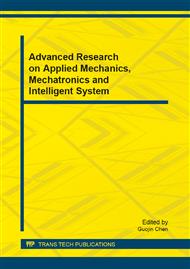p.41
p.46
p.55
p.61
p.66
p.70
p.75
p.83
p.93
Global Structural Response Analysis of Jack-Up Ship in Transit Condition
Abstract:
The global structural response of a four-leg jack-up wind turbine installation ship in the transit condition was analyzed in this paper. The finite element model of the hull and legs were established with the Software MSC. PATRAN. On the basis of long-term forecast of the wave loads, the corresponding designed wave parameters are determined with the vertical wave bending moment of the midship cross section served as the main load control parameter. Considering the gravity, hydrostatic pressure, the hydrodynamic loads induced by the wave, inertia force induced by the motion and acceleration of the ship and the wind force on the legs and hull, the direct calculated method was used to evaluate the global structural response of the vessel. The deformation and stress of the hull and legs were calculated and checked. The results showed that the strength of the hull and leg could meet the rules requirements. For the jack-up ship in the transit condition, the critical areas are mainly lower part of legs and the corresponding hull structure.
Info:
Periodical:
Pages:
66-69
Citation:
Online since:
July 2013
Authors:
Price:
Сopyright:
© 2013 Trans Tech Publications Ltd. All Rights Reserved
Share:
Citation:


